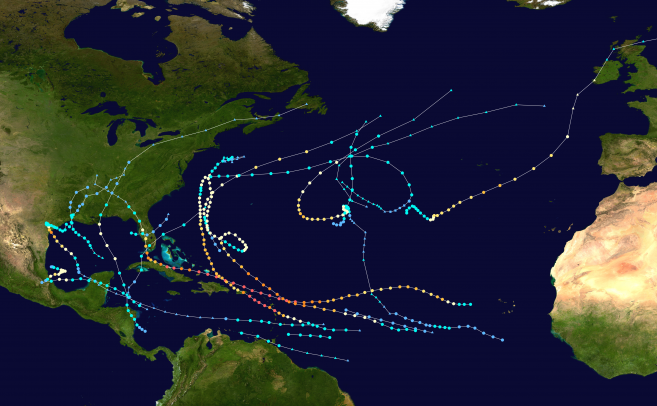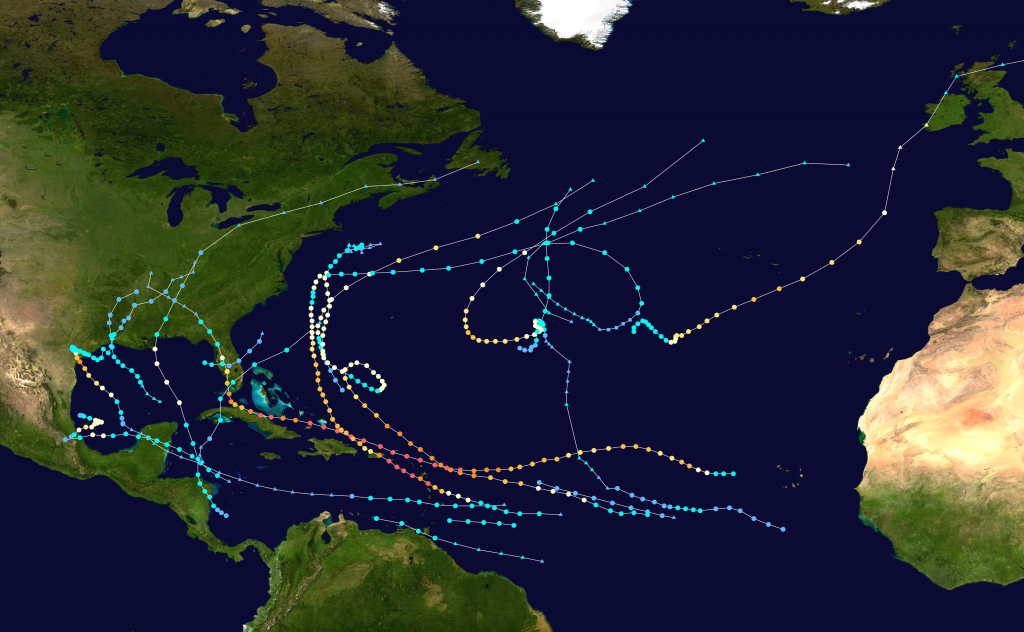Thursday, November 30th marked the end of the 2017 Atlantic Hurricane Season. A total of 17 named storms formed during the five months of the season. Of the 17 storms 10 became hurricanes. Belize was once again spared, but flooding was a major issue due to the adverse effects of passing tropical storms in the area.
Of the 10 named storms, six reached major hurricanes status (category 3 of higher). The two strongest storms of the season were Hurricane Irma and Maria with strong winds of 185 and 175, miles per hour respectively. Meteorologists attribute the above normal activity of the season to a decrease in vertical wind shear and the presence of odd sea surface temperatures in the Tropical Atlantic Ocean. Another important factor to know was the transition from a neutral El Niño-Southern Oscillation pattern at the start of the hurricane season to a weak La Niña by the end of the season. Meteorologists concluded that this shift supported weaker vertical wind shear over the Caribbean Basin, which is more conducive for tropical weather development.
The 2017 Hurricane Season started early this year, way outside of its scheduled time in June. Tropical Storm Arlene formed in April and was among one of the most northern pre-season storms on record. A few days after the season opened in June, Tropical Storm Bret struck Trinidad, a Caribbean nation rarely affected by these weather systems due to its low latitude. A couple days later, Tropical Storm Cindy hit the state of Louisiana in the United States of America. Two months later, the first major hurricane was formed, Hurricane Harvey, making landfall on the state of Texas. The storm caused major damages that hadn’t been seen since Hurricane Wilma in 2005, and setting the record for the costliest storm in the USA.
The following month in September, a system that had started in western coast of Africa formed into Hurricane Irma. This storm became the first category 5 hurricane to impact the northern Leeward Islands causing massive destruction to island nations like Anguilla and the Genadines. Later, Irma struck the Florida Keys in the U.S as a category 4 storm causing major destruction. In late September, another category 5 storm, Hurricane Maria flattened countries like Dominica and devastated other places such as Puerto Rico in the Caribbean.
Another observation was Hurricane Nate, which became the fastest moving tropical storm ever recorded in the Gulf of Mexico. The last major storm for the season was recorded in mid-October when Hurricane Ophelia became the easternmost cyclone in the Atlantic basin, which later hit parts of Northern Europe as an extratropical storm.
Belize was not directly affected by any of the storms. However, Harvey caused severe flooding in the north of the country.
The National Meteorological Service advices that even though the hurricane season is over, there are possibilities that a late storm formation could still occur. The Service stated that they remain committed in its mission of keeping the Belizean public well informed of any weather event that may affect their well-being and the sustainable development of the nation.

Share
Read more

